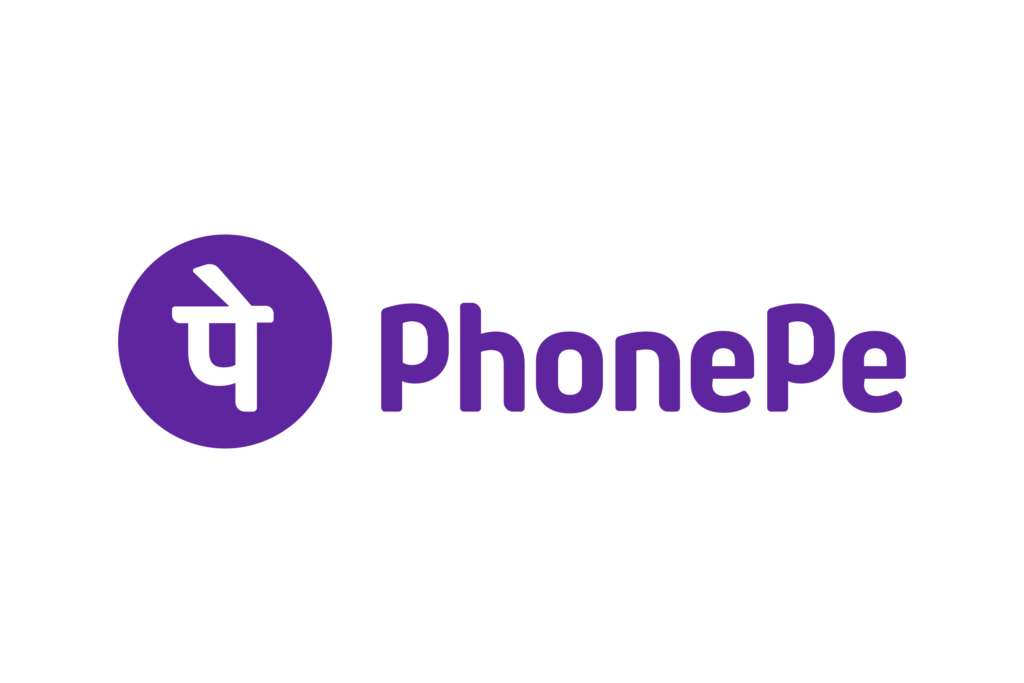As cyber threats become more sophisticated and pervasive, financial institutions face significant challenges in protecting sensitive data and maintaining the integrity of their systems. The financial sector is one of the most targeted industries by cybercriminals, with data breaches, ransomware attacks, and other forms of cyberattacks posing serious risks to banks and their customers. To counter these threats, financial institutions have increasingly turned to Advanced Threat Intelligence Sharing, a collaborative approach that enables organizations to share real-time threat information to stay ahead of cybercriminals.
JPMorgan Chase, one of the world’s largest and most influential financial institutions, has been at the forefront of implementing advanced threat intelligence sharing. By collaborating with other financial organizations, government agencies, and cybersecurity firms, JPMorgan Chase has built a robust threat intelligence-sharing network that enhances its ability to detect and mitigate cyber threats. This case study explores how JPMorgan Chase has effectively implemented advanced threat intelligence sharing to strengthen its cybersecurity posture and protect its assets, clients, and reputation.
Background on Cybersecurity Challenges in the Financial Sector
The financial sector is a prime target for cyberattacks due to the large volume of sensitive data, including personal and financial information, stored by banks and financial institutions. Common cyber threats faced by the financial sector include:
- Phishing and Social Engineering Attacks: Cybercriminals often use phishing emails to trick employees or customers into revealing sensitive information or downloading malicious software.
- Ransomware Attacks: Ransomware has become a common attack vector, where cybercriminals encrypt an institution’s data and demand a ransom for its release.
- Insider Threats: Financial institutions face the risk of insider threats, where employees or contractors misuse their access to internal systems for malicious purposes.
- Data Breaches: Data breaches can expose sensitive customer information, leading to financial losses, regulatory fines, and reputational damage.
To effectively combat these threats, financial institutions must not only invest in advanced cybersecurity technologies but also collaborate with other organizations to share information about emerging threats and vulnerabilities.
What is Threat Intelligence Sharing?
Threat intelligence sharing refers to the exchange of information about cyber threats, vulnerabilities, and attack methods among organizations to enhance their collective cybersecurity defenses. Threat intelligence can include data on:
- Indicators of Compromise (IOCs): Technical data points, such as IP addresses, domain names, and file hashes, that indicate malicious activity.
- Tactics, Techniques, and Procedures (TTPs): Descriptions of how cybercriminals operate, including their attack methods and strategies.
- Threat Actor Profiles: Information on known cybercriminal groups, including their targets, motivations, and attack patterns.
By sharing this information, financial institutions can proactively detect and defend against potential attacks before they materialize.
Key Challenges Faced by JPMorgan Chase Before Implementing Advanced Threat Intelligence Sharing
Before adopting advanced threat intelligence-sharing practices, JPMorgan Chase faced several significant cybersecurity challenges:
- Increased Frequency and Sophistication of Cyber Attacks: Cyberattacks targeting JPMorgan Chase were becoming more frequent and sophisticated, making it difficult for traditional security measures to keep pace.
- Limited Visibility into Emerging Threats: Like many financial institutions, JPMorgan Chase struggled to stay ahead of emerging threats. Without real-time information on new attack vectors, the bank was vulnerable to zero-day exploits and advanced persistent threats (APTs).
- Siloed Security Information: JPMorgan Chase’s cybersecurity teams operated in silos, making it difficult to share relevant threat information across departments and with external partners.
- Compliance and Regulatory Requirements: As a global financial institution, JPMorgan Chase had to comply with numerous cybersecurity regulations, including those related to data protection and incident reporting. Failure to adequately protect customer data could result in significant financial penalties and reputational damage.
JPMorgan Chase’s Approach to Advanced Threat Intelligence Sharing
To address these challenges, JPMorgan Chase developed a comprehensive strategy for implementing advanced threat intelligence sharing. The strategy focused on three core pillars: collaboration, technology, and process optimization.
1. Collaboration with Industry Partners and Government Agencies
JPMorgan Chase recognized the importance of collaboration in addressing cybersecurity threats. As part of its threat intelligence-sharing efforts, the bank joined several key industry groups and initiatives, including:
- FS-ISAC (Financial Services Information Sharing and Analysis Center): FS-ISAC is a global consortium of financial institutions dedicated to sharing critical threat intelligence to enhance the sector’s cybersecurity defenses. As a member of FS-ISAC, JPMorgan Chase receives real-time alerts about new threats and shares information on incidents it detects.
- Partnerships with Government Agencies: JPMorgan Chase collaborates with various government agencies, including the U.S. Department of Homeland Security (DHS), the FBI, and the National Cybersecurity and Communications Integration Center (NCCIC). These partnerships allow the bank to access critical threat intelligence and incident response support.
By participating in these collaborative efforts, JPMorgan Chase has been able to improve its visibility into emerging threats and strengthen its defenses.
| Collaboration Partners | Description |
| FS-ISAC | Industry group focused on sharing threat intelligence among financial institutions. |
| Government Agencies | JPMorgan Chase collaborates with DHS, FBI, and NCCIC to access threat intelligence and response support. |
2. Leveraging Advanced Technology for Threat Intelligence Sharing
JPMorgan Chase also invested heavily in advanced technologies to facilitate threat intelligence sharing across its global operations. Key technologies used include:
- Threat Intelligence Platforms (TIPs): TIPs allow JPMorgan Chase to aggregate, analyze, and share threat intelligence data in real time. The bank uses TIPs to integrate information from multiple sources, including FS-ISAC, government agencies, and cybersecurity vendors, to gain a comprehensive view of the threat landscape.
- Security Information and Event Management (SIEM): SIEM systems collect and analyze security data from across JPMorgan Chase’s network, allowing security teams to detect and respond to threats in real time. SIEM platforms are integrated with the bank’s threat intelligence feeds, enabling automated alerts for known IOCs and TTPs.
- Automated Threat Response: JPMorgan Chase has implemented automation tools that can respond to certain types of cyber threats automatically, reducing the time it takes to mitigate attacks.
| Technology Used | Description |
| Threat Intelligence Platforms (TIPs) | Aggregate, analyze, and share threat intelligence data from various sources in real time. |
| SIEM Systems | Collect and analyze security data to detect and respond to threats across the network. |
| Automated Threat Response | Uses automation tools to quickly mitigate certain types of cyberattacks, reducing response time. |
3. Process Optimization and Internal Collaboration
In addition to external collaboration, JPMorgan Chase optimized its internal processes to facilitate the sharing of threat intelligence across its various business units and security teams. Key process improvements included:
- Cross-Departmental Sharing: JPMorgan Chase established protocols for sharing threat intelligence across departments, ensuring that cybersecurity, risk management, fraud prevention, and compliance teams had access to the same threat data.
- Incident Response Playbooks: The bank developed standardized incident response playbooks that incorporate shared threat intelligence, enabling teams to respond consistently to similar threats.
- Threat Intelligence Training: To ensure that all employees understood the importance of threat intelligence sharing, JPMorgan Chase provided regular training on how to identify, report, and respond to potential threats.
By breaking down silos and improving internal communication, JPMorgan Chase enhanced its ability to detect and respond to cyber threats more efficiently.
| Process Improvement | Description |
| Cross-Departmental Sharing | Established protocols for sharing threat intelligence across cybersecurity, risk, and compliance teams. |
| Incident Response Playbooks | Standardized response playbooks based on shared threat intelligence for consistent threat mitigation. |
| Employee Training | Provided regular training on threat detection, reporting, and response for all employees. |
Impact of Advanced Threat Intelligence Sharing on JPMorgan Chase
The implementation of advanced threat intelligence sharing has had a significant impact on JPMorgan Chase’s ability to protect its assets and customers from cyber threats. Below are some of the key benefits the bank has observed:
1. Improved Threat Detection and Response Times
By leveraging real-time threat intelligence from external partners and internal sources, JPMorgan Chase has significantly improved its ability to detect and respond to cyber threats. Threats that might have gone unnoticed for hours or days are now identified within minutes, allowing the bank to take swift action.
| Impact on Detection and Response | Before Threat Intelligence Sharing | After Threat Intelligence Sharing |
| Average Detection Time | 12-24 hours | < 1 hour |
| Average Response Time | Several hours | < 30 minutes |
2. Reduced Incident Costs and Financial Losses
The faster detection and response times enabled by advanced threat intelligence sharing have helped JPMorgan Chase reduce the financial impact of cyber incidents. By preventing attacks from escalating, the bank has minimized the damage caused by ransomware, data breaches, and other cyber threats.
| Financial Impact | Before Threat Intelligence Sharing | After Threat Intelligence Sharing |
| Average Cost per Incident | $500,000 | $100,000 |
| Number of Major Incidents per Year | 10+ | 3-5 |
3. Increased Compliance with Regulatory Requirements
By implementing advanced threat intelligence-sharing practices, JPMorgan Chase has improved its compliance with cybersecurity regulations, including those related to incident reporting and data protection. The bank’s proactive approach to threat intelligence sharing demonstrates its commitment to protecting customer data and complying with global regulatory frameworks.
| Compliance Benefits | Description |
| Regulatory Compliance | Improved compliance with regulations like GDPR and the U.S. Cybersecurity Information Sharing Act. |
| Reduced Risk of Regulatory Fines | Decreased the likelihood of non-compliance penalties by demonstrating proactive cybersecurity measures. |
4. Stronger Industry-Wide Collaboration
Through its participation in FS-ISAC and collaboration with government agencies, JPMorgan Chase has strengthened its ties with other financial institutions and industry stakeholders. This increased collaboration has fostered a culture of shared responsibility in addressing cybersecurity challenges, benefiting the entire financial sector.
Case Study Example: JPMorgan Chase’s Response to a Phishing Attack
A key example of JPMorgan Chase’s success with advanced threat intelligence sharing occurred during a major phishing attack that targeted several global financial institutions, including JPMorgan Chase.
Incident Overview:
Cybercriminals launched a phishing campaign aimed at employees of multiple banks, sending fraudulent emails that appeared to be from trusted sources. These emails contained malicious links that, if clicked, would install malware designed to steal login credentials.
JPMorgan Chase’s Response:
Using its threat intelligence-sharing network, JPMorgan Chase quickly received information about the phishing campaign from FS-ISAC, including the phishing email templates and known malicious URLs. The bank immediately flagged these indicators of compromise (IOCs) within its SIEM system and issued a company-wide alert to all employees, advising them not to click on suspicious links.
Results:
- Proactive Threat Detection: JPMorgan Chase detected the phishing emails before any employees fell victim, significantly reducing the risk of a data breach.
- Swift Response: The bank’s security team blocked the malicious URLs in its email system, preventing employees from accessing them.
- Reduced Impact: By acting on shared threat intelligence, JPMorgan Chase successfully avoided the financial and reputational damage that other banks involved in the attack experienced.
Conclusion
JPMorgan Chase’s implementation of advanced threat intelligence sharing has played a pivotal role in strengthening its cybersecurity defenses and protecting its customers from increasingly sophisticated cyber threats. By collaborating with industry partners, leveraging advanced technologies, and optimizing internal processes, JPMorgan Chase has improved its threat detection and response capabilities, reduced incident costs, and increased regulatory compliance.
Click here, to know more about Minimising Ransomware Risks with Advanced Backup Strategies: A Case Study on Adobe’s Approach.
As cyber threats continue to evolve, advanced threat intelligence sharing will remain a critical component of JPMorgan Chase’s cybersecurity strategy, ensuring that the bank remains resilient in the face of emerging challenges.
FAQs
- What is threat intelligence sharing, and why is it important for financial institutions?
- Threat intelligence sharing is the exchange of information about cyber threats, vulnerabilities, and attack methods among organizations to improve collective defenses. It is crucial for financial institutions because it helps them detect and respond to emerging threats more effectively.
- How does JPMorgan Chase participate in threat intelligence sharing?
- JPMorgan Chase collaborates with industry groups like FS-ISAC and government agencies, using advanced technologies to share and receive real-time threat intelligence.
- What technologies does JPMorgan Chase use for threat intelligence ?
- JPMorgan Chase uses threat intelligence platforms (TIPs), security information and event management (SIEM) systems, and automated threat response tools to facilitate real-time sharing and response.
- What are the benefits of advanced threat intelligence for JPMorgan Chase?
- Benefits include faster detection and response times, reduced financial losses from cyber incidents, increased regulatory compliance, and stronger collaboration with other financial institutions.
- How has JPMorgan Chase improved its incident response using shared threat intelligence?
- By integrating threat intelligence into its incident response playbooks, JPMorgan Chase has standardized its response procedures and reduced the time it takes to mitigate cyberattacks.
Click here, to know more about Minimising Ransomware Risks with Advanced Backup Strategies: A Case Study on Adobe’s Approach.









